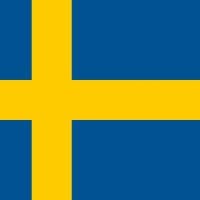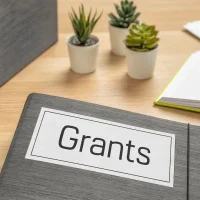Once again, new opportunities under the initiatives “Grand Challenges in Global Health” and “Grand Challenges Explorations” have been launched to address significant global challenges that could lead to crucial advances in preventing, treating, and curing diseases of the developing world.
The Grand Challenges in Global Health (GCGH) and the Grand Challenges Explorations (GCE) are the initiatives launched by the Bill & Melinda Gates Foundation in 2003 & 2008 respectively, seeking to engage the world’s most creative minds to foster innovation in solving critical global health and development problems. Each initiative is an experiment in the use of challenges to focus innovation on making an impact. Individual challenges address some of the same problems, but from differing perspectives.
This year also four major opportunities have been launched under Grand Challenges and Grand Challenge Exploration to encompass global development as well as global health. Opportunities are as follows:
In the twenty-fifth round of Grand Challenges Explorations, proposals were solicited that target the following two challenges:
- Innovations for Improving the Impact of Health Campaigns (Round 25): The Bill & Melinda Gates Foundation is currently accepting proposals for the Round 25 of the Grand Challenges Exploration (GCE) on the topic of “Innovations for Improving the Impact of Health Campaigns”. The Foundation is seeking innovative solutions that accelerate the improvement of coverage, reach, efficiency, and effectiveness of mass health campaigns that deliver health products or services in low-and middle-income countries, specifically through improved planning/microplanning and focus on unreached populations…[Continue to read more]
- Innovations in Materials Science for a Transformative Menstrual Health and Hygiene Product (Round 25): This Grand Challenge opportunity seeks fundamentally transformative and innovative ideas to support the design and development of new MHH products that meet key criteria of being responsive to user needs – particularly in LMIC context; with priority focus on safety, unobtrusiveness, effectiveness (no leaking), cultural acceptability, and sustainability. While there are a number of challenges related to access to current products, reducing stigma, and shifting social norms, this opportunity is specifically focused on driving transformative innovation in the product development domain…[continue to read more]
In addition, under the Grand Challenges initiative, proposals were solicited that target a further two challenges:
- Accelerating Discovery for Non-Hormonal Contraceptives: The goal of this Grand Challenge is to identify new approaches and concepts directed at the characterization of novel contraceptive drug targets, the identification of active contraceptive compounds useful for target validation and proof-of-principle studies, and the development of novel and impactful research tools with the potential to revolutionize the field of contraceptive R&D. The focus of this Grand Challenge is on broadly enhancing the research ecosystem for contraceptive discovery and advancing novel and bold ideas that can accelerate drug discovery in this field…[continue to read more]
- Improving Access to and Use of Safe and Appropriate Cesarean Section: The Bill & Melinda Gates Foundation is inviting proposals for interventions to address the challenges related to the cesarean section. The Foundation seeks to make Seed Grants to generate proof of concept of novel interventions together with Validation Grants to generate further evidence of feasibility at a larger scale for existing interventions…[continue to read more]
Grand Challenges Explorations: Tips from Reviewers
Review Process
Because the foundation receives so many submissions, proposals go through an initial screening phase in which those that do not respond to specific elements in the topic description or propose ideas clearly identified as “off‐topic” are removed. Following this initial phase, each proposal is reviewed independently by up to six members of an external panel of reviewers with broad expertise and with experience in identifying innovative approaches to solving daunting challenges. Proposals may also be reviewed by a separate panel of relevant experts. The entire review process is blinded, and the applicant’s name and affiliation are not revealed to the reviewers.
Tips from Reviewers (Also available in Portuguese, Spanish, French, Korean and Chinese.)
Reviewers have identified the following critical characteristics of successful proposals:
- Innovation: In the first section of the proposal, applicants should include one or two sentences in bold that capture the essence of their idea. These sentences should convey what is exciting about the idea, why it is innovative and how it differs substantially from existing solutions. Applying expertise from outside the topic area is one of the sources of innovation evident in funded projects.
- Responsiveness of the Proposal: The proposal must explain how the idea addresses a key need illustrated in the topic description. In addition, the topic description highlights ideas that will not be funded, so applicants should make sure that their idea does not fall into one of these categories.
- Testability of the Idea: Applicants must include a clear, logical and thoughtful description of how the proposed idea will be tested and produce interpretable and unambiguous data. Since proposals are reviewed “blind,” this description is a key element in conferring scientific credibility on the project.
- Feasibility of the Project: The application must describe how the work will be performed within the GCE Phase I budget and within the 18‐month time frame allocated for a Phase I GCE award.
- Potential for Increased Funding: GCE is designed as a two‐phase funding mechanism whereby projects that have shown initial promise can receive increased funding. Phase I applications are more likely to be funded if they clearly and convincingly describe a general plan for moving forward in Phase II.
- Clarity: Most of the reviewers for each proposal are likely not to be deep experts in the field. To maximize the chance of being funded, proposals should be written in clear language without jargon specific to a particular field. Given the two‐page limit, proposals also should be concise and balanced in how they present the elements described above.
To learn more about the ideas that have received funding, please visit the Grand Challenges web site.
Still have questions about Grand Challenges Explorations? Read:
- Frequently Asked Questions (FAQs)
- How Grand Challenges Explorations Grants Are Selected
- Application Instructions









































